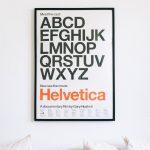Euro Bill Size Chart
Euro banknotes also known as Euro bills have been in circulation since 2002 when the first series was produced. Euro system member banks and the European Central Bank (ECB) are the issuers of these currencies. Established in 1999, the Euro “was an invisible currency, used for accounting solely, for instance in electronic payments” during the first three years (skip straight to the euro bill size chart).
They issued the first banknotes and coins in 2002. After quickly replacing the former national currencies, the euro is progressively spreading across the European Union.
Banknotes from €5 to €500 are issued and printed in several Eurozone countries, but their design is constant. The durability and unique texture of the Euro banknotes come from the use of 100% cotton fiber. They come in a wide range of sizes and colors, from 120 to 62 millimeters (4.7 in 2.4 in) to 160 by 82 millimeters (6.3 in 3.2 in).

There are watermarks, invisible ink, holograms, inks that change how they look, and microprinting on Euro bills. Unlike euro notes, euro coins show the country where they were made.
In November 2021, the ECB projected that there were roughly 27.640 billion banknotes worth about €1.519 trillion circulating in the Eurozone.
The European Central Bank announced on November 8, 2012, that beginning with the 5 Euro note on May 2, 2013, the Europa series (also dubbed ES2 would replace the first series of notes). The European Central Bank (ECB) has chosen to “permanently” end the manufacture of the €500 note to thwart illegal tender, hence there is no such note in this series.
Jump right into the Frequently Asked Questions
Related: Business card size by type of card and country, Poster board size by type, dimensions and usage (size-charts included), Ansi Paper Size Chart – North America paper Sizes And Formats
Euro Bill Size Table of Contents
- Euro bill size chart
- How to choose the right Euro bill sizes
- The Dimensions of Euro bill notes | Why Do Euro bills Come in Different Sizes?
- Frequently asked questions
Euro bills size chart
Related: Business Card Dimensions: Standard, International & special sizes
| Value | Year | Dimensions | Main Colour | Architectural styles/period |
| €5 | 2002 | 120 × 62 mm 4.7 x 2.4 in | Grey | Classical |
| €10 | 2002 | 127 × 67 mm 5 x 2.6 in | Red | Romanesque |
| €20 | 2002 | 133 × 72 mm 5.2 x 2.8 in | Blue | Gothic |
| €50 | 2002 | 140 × 77 mm 5.5 x 3. in | Orange | Renaissance |
| €100 | 2002 | 147 × 82 mm 5.8 x 3.2 in | Green | Baroque and rococo |
| €200 | 2002 | 153 × 82 mm 6 x 3.2 in | Yellow | Iron and glass architecture |
| €200 | 2002 | 160 × 82 mm 6.3 x 3.2 in | Purple | Modern 20th century architecture |
How to choose the right Euro bill sizes
Related: Credit Card Sizes – What Are the Dimensions
There are seven features shared by all banknotes.
In defining the requirements for euro banknotes, governors from European national central banks used the terms “attractive,” “safe,” and “user-friendly” to describe the design. At a European Council meeting in Dublin on December 13, 1996, the ECB Governing Council announced the winning designs from the European-wide competition it had organized.
Robert Kalina, a graphic designer at the National Bank of Austria, created the winning series, titled “Ages and styles of Europe.” These revised blueprints now include the added safety measures. Production in the printing works of the euro region began in the spring of 1999 after the European Central Bank allowed the technical specifics. On May 2, 2013, they issued a new €5 banknote, marking the beginning of the second series of Euro banknotes.
The new batch of banknotes, dubbed “Europa” after the Greek princess whose face appears in the watermark, contains updated security elements to prevent forgery. Berlin-based freelance graphic artist Reinhold Gerstetter created the series’ new €5 and €10 notes, which debuted on January 10, 2013, and January 13, 2014, respectively. On November 25, 2015, and April 4, 2017, they introduced new €20 and €50 notes.
Seven different notes, ranging from €5 to €500
Euro system central banks provide seven denominations ranging from €5 to €500 to cater to the requirements and preferences of Europeans. There are two distinct versions of the €5 and €10 available: the original series, released on 1 January 2002, and the updated series, introduced on 2 May 2013 for the €5 and 23 September 2014 for the €10. The new series’ third banknote, the €20 bill, entered circulation on November 25, 2015. On April 4, 2017, they released the €50 banknote into circulation.
Variable sizes
Euro banknotes are uniquely sized so that they may be quickly and easily identified, even by the blind and visually challenged. The width of banknotes from €5 to €100 grows by 5 mm, while the length grows by 6–7 mm.
All three banknotes share the same width but different lengths: €100, €200, and €500.
Color differences
Banknotes from both series of the euro have a distinct color scheme that makes it possible to tell each denomination apart. The colors of the rainbow serve as an inspiration for the color spectrum.
The denominations of €10, €20, and €50 are denoted by the colors red, blue, and orange, respectively, whereas €100, €200, and €500 are denoted by the colors green, yellow, and purple, respectively. They chose gray for the design of the most popular banknote, the €5 since it masks fingerprints and dirt less than other colors.
The European map
The map of Europe that is printed on the back of the bills is a reproduction that was created using satellite images. You can find it on the back of the bills. This map covers a significant area that stretches well beyond Europe, including a portion of Asia Minor and even some of North Africa as well. It is possible to enclose it within a box with the Canaries and Azores on one side and the northernmost point of Finland lying beyond the Arctic Circle on the other side.
The European Union’s Stars and Stripes
There is a depiction of the flag of Europe, which is blue, on the front of the banknotes. The circle of 12 stars in the middle of the flag represents the cooperation that exists between the 12 countries that make up Europe.
There is always the same number of stars in the sky, which is thought to signify completeness and harmony. For example, there are 12 months in a year and 12 traditional constellations in the zodiac. The number of stars always remains the same.
Inscriptions
ECB banknotes include minimal writing to simplify the design and prevent translation issues. Each banknote’s face value is printed multiple times on both sides, including in big font on the front for the benefit of the visually challenged.
Both the Latin (EURO) and Greek (EYP) alphabets, and for the Europa series of euro banknotes, the Cyrillic alphabet, is used to spell out the name of the currency. They did this to commemorate Bulgaria’s accession to the European Union in 2007.
The Dimensions of Euro bill notes | Why Do Euro bills Come in Different Sizes?
Related: Envelope Size Guide: Commercial, Baronial…
We can find banknotes in a wide variety of sizes and shapes because of the wide variety of options available to countries for printing their currency. Even if countries have sophisticated printing gear that allows them to produce vast quantities of notes on demand, we must develop the notes to the right standard to satisfy end users and be printed by the machinery.
The final reason nations issue banknotes are to facilitate the flow of products inside the country, as the citizens of the nation require cash to take part in the economy. A discussion of the factors that go into the creation of national banknotes and the sizes of currencies across the world.
Size of a Banknote Guide
As was previously mentioned, its population prints for a country’s banknotes to allow the trade of goods and services.
Imagine receiving a hefty cheque for $1.00 million after winning the lottery to visualize the minimum dimensions for a banknote.
Can you picture yourself exchanging a bill of that size for a pack of gum or a cup of coffee if the bill only had a face value of $1? Banknotes need to be usable in the real world.
They need to last a long time. They need to allow for the widespread use of automated teller machines and related payment systems. Banks need them to be compact enough to store in large quantities. We can summarize these needs in only five elements:
Notes issued by central banks should be a manageable size for standard wallets.
The parking meters, ATMs, and vending machines that receive currency should be able to accommodate the banknotes.
For those who are visually handicapped, banknotes should be easily readable.
It is imperative that banknotes have anti-counterfeiting mechanisms built into them.
The central banks and other cash processing operations should be able to quickly and efficiently process banknotes.
Check out this video to compare old euro bills Vs. new (video)
One of the most significant criteria for banknote size is how easily it fits in a wallet. In the Netherlands, for instance, people are accustomed to banknotes that measure 76mm in height. When the 50 Euro note was initially introduced, there was a widespread worry that its height of 82 millimeters would prevent it from fitting in a standard wallet. The currency that doesn’t fit in wallets wears faster around the edges.
Sometimes, equipment that receives bills, such as ATMs, vending machines, and parking garage pay stations, might be picky about which bills they will accept. Although a banknote can be inserted in one of up to eight distinct ways, they set many machines up to only take bills in a specific orientation.
These devices require more techniques to recognize banknotes in order to accept all valid notes while rejecting fraud notes when varied currency measurements are used. Inconsistently sized bills cause long lines at ATMs and aggravate harried customers trying to pay for parking or refreshments with cash.
They gave the visually handicapped special consideration through the use of banknotes of varying sizes. People with disabilities should have the same opportunities as everyone else to take part in the workforce. Canada and China are just two of several countries that have printed some of their banknotes in braille for the blind and visually challenged.
The number of blind youngsters learning braille has dropped to below 10%, making the technology increasingly obsolete. The varying sizes of bills are used to help the vision handicapped tell them apart. Some nations, such as Mexico, Pakistan, and Switzerland, and those adopting the Euro, use different denominations of currency to better accommodate blind people.
While they used the amount of currency in a common security feature, it has less of an impact on forgery overall. There is no variation in the size of any US banknote or the color printing used on any of them. Counterfeiters can increase the value of these bills by washing the cotton/fiber material they are printed on and recreating them with new designs with greater denominations.
It is possible to completely eliminate this technique of counterfeiting by utilizing various currency dimensions for different denominations of a banknote, although as was mentioned above, this can lead to additional difficulties.
Last but not least, money handlers require the ability to use machines to efficiently sort and count large amounts of currency. The creation of smaller banknotes for the visually handicapped can cause issues for automated currency handling systems. Therefore, for efficient processing, banknotes should be between 65mm and 90mm in height.
Learn more about euro bill size and more (video)
Frequently asked questions
1. What’s the smallest euro bill size?
€5
2. How big is the biggest euro bill size?
The European Central Bank argues that the 500 euro note, which is now the largest denomination available across the common euro currency zone, is the banknote of choice for those engaging in illegal activity.
It is the denomination with the lowest volume of circulation, making up only 1.2% of all banknotes in circulation. It has a color scheme of purple and is 160 mm by 82 mm, making it the largest and most significant note. The banknotes worth five hundred euros each display modern architectural elements such as bridges, arches, and doors (around the late 20th century).
3. How much does one euro bill weighs?
7.50g
€1. Diameter: 23.25mm. Thickness: 2.33mm. Weight: 7.50g.
4. Are all euro bills the same size?
Unlike the euro coins, which feature different designs for each country in the Eurozone, all banknotes feature the same design. In all Eurozone member states, one side of every coin is the same. Each country that mints its own coins adds an emblem of its own national identity to the reverse.
Banknotes issued in the euro currency are made entirely of cotton fiber, which not only makes them more durable but also lends them a distinct appearance and texture. They come in a variety of color combinations and range in size from 120 millimeters by 62 millimeters (4.7 inches by 2.4 inches) to 160 millimeters by 82 millimeters (6.3 inches by 3.2 inches).
5. Are euro bills different?
All nations in the Eurozone use the same banknote design. The dimensions, weight, thickness, shape, and edge marking of coins from different countries are all identical. They all share a common side that clearly shows the denomination.
6. Do all European countries use the same design for their banknotes?
There are seven distinct denominations of banknotes that are issued for use with the euro: 5, 10, 20, 50, 100, and 200 euros. All countries that use this currency have identical banknotes, which have designs inspired by seven distinct periods in European architectural history.
7. Have the measurements of the new banknotes changed?
The dimensions of the new series’ €5, €10, €20, and €50 banknotes have not changed. We should note that the Europa series’ €100 and €200 banknotes are the same sizes.
To facilitate easier handling of banknotes, for instance when placing them in a wallet, they have decreased the height of the new series 2 €100 and €200 banknotes from 82 mm to 77 mm.
Conclusion
Examining the limitations on banknote size reveals a relatively small range of sizes is achievable, despite the wide range of sizes used by different countries. The majority of nations employ printing equipment in the KBA format, which creates the most professional-looking notes when the measurements are 73 millimeters in height and 133 millimeters in width.
Any variance from this norm needs to take the aforementioned considerations into account; as we’ve seen, however, the security features built into different-sized bills cause additional difficulties for currency processors. When you next look at your collection of banknotes, take out a ruler and think about how careful and precise it was to make sure the sizes were just right.
Thank you for reading our article. For any questions, you may leave them in the comment section.
Picture in this post is by JustStartInvesting on Unsplash
Related to Euro Bill Size
- Euro Bill Size Chart
- Credit Card Sizes – What Are the Dimensions
- Envelope Size Guide: Commercial, Baronial…
- Rubber Band Size Chart
- Business Card Dimensions: Standard, International & Special Sizes
- Business Card Size by Type of Card and Country
- Poster Board Size by Type, Dimensions and Usage (Size-Charts Included)
- Passport Photo Size Chart and Tips to Get the Perfect ID Picture
- Picture Frame Size for Photos or Art – Standard and Special Sizes
- Poster Sizes in Centimeters and Inches (with Useful Size-Charts)
- Box sizes for shipping, dimensions by type and company
- Postcard dimensions and sizes
- Paper Sizes Chart – ISO standard – Dimensions And Measurements
- Ansi Paper Size Chart – North America paper Sizes And Formats















